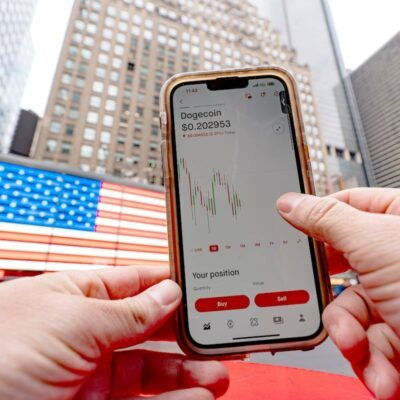These portfolios that seek to match, rather than beat, a market’s returns usually charge extremely low fees and generate low tax bills. If you buy a handful of index funds, sit on them for decades and never do another thing, you’re likely to outperform nearly everyone who tries to beat the market by trading—including most professionals.
But what’s the fun in that? Can you endure a lifetime of barbecues and cocktail parties where other people brag about their winning trades and all you can do is mutter, “Umm, I own index funds and I haven’t made a trade in a decade”?
No wonder index funds can become tempting to trade. You see a hint of this in a new study from Morningstar. Each year, the research firm estimates the gap between the returns of mutual funds and exchange-traded funds and the returns their investors earn as a group.
Mutual fund or ETF returns are reported as if you bought at the beginning of a measurement period, reinvested all income or capital gains, and never cashed out.
After all, that’s how the fund, as an investment, behaved. But it isn’t how most of its investors behaved.
Sure, some bought and held fast. Others traded fast, driven either by financial circumstances or their own fickle emotions.
Morningstar estimates a separate figure—investor returns—by accounting for the money a fund’s owners collectively added and pulled out during the period.
Those who buy and hold will earn investor returns close to their funds’ reported total returns. Those who buy high and sell low will earn investor returns lower than those of the funds they own.
Over the 10 years ended Dec. 31, 2023, Morningstar found, investors in the aggregate earned an average of 6.3% annually, or 1.1 percentage points less than the mutual funds and ETFs they owned.
That echoes earlier findings from Morningstar and several academic and other studies. The consensus is clear: Investors typically underperform their investments, not just in mutual funds and ETFs, but in hedge funds and stocks as well.
At least a small gap is almost inevitable. Over most periods of 10 years or more, stocks go up. Contributing gradually—say, through your 401(k)—means you’ll lag your fund in the long run, simply because you didn’t put all your money to work in the beginning.
That’s true even if you’re purely a buy-and-hold investor who never chases hot returns or panic-sells in market crashes.
Too many investors aren’t patient, however, and often bet on narrower slices of the market. Because index funds are cheaper and diverge less from their benchmarks than actively managed funds do, they’ve become the vehicle of choice for these short-term bets.
Look at sector funds, those portfolios of stocks in a specific industry like technology or energy. There, every bit of noise can feel like news, goading people into trying to get rich quick. Rapid wrong-footed trades can quickly push investor returns far below the funds’ own returns.
Relative to funds that track the market as a whole, sector index funds “shoot for larger gains or focus on themes that have more excitement to them,” says Jeffrey Ptak, chief ratings officer at Morningstar and lead author of the study.
The Technology Select Sector SPDR ETF, for instance, gained 56% last year—but lost almost 28% in 2022.
Among these specialized industry portfolios, a lot more money sloshes in and out of index funds than at their actively managed peers.
Over the 10 years ended last Dec. 31, investor returns fell behind total returns at sector index funds by 2.9 percentage points annually—even worse than the 2.0-point gap at actively managed sector portfolios.
When you shoot for the moon with sector index funds, you stand a good chance of shooting yourself in the foot.
Or consider so-called smart-beta or factor funds. They don’t bother trying to pick individual securities, as actively managed funds do. Instead, they buy bundles of stocks or bonds with common statistical properties, such as high profitability, rapid recent price gains or a low price relative to earnings.
Again, these funds often fluctuate more sharply because their focus is narrower than the market as a whole.
Such sharp swings often shock unwary investors and financial advisers who expect these funds to perform a little better than the market, says Nicolas Rabener, chief executive of Finominal, a research firm in London.
The Invesco S&P 500 Low Volatility ETF outperformed the S&P 500 itself by more than 13 percentage points in 2022. Last year, it fell behind by more than 25 percentage points. Over the 10-year period Morningstar measured, the fund’s investors as a group underperformed it by 1.2% annually, estimates Ptak.
How can you narrow the performance gap between you and your funds?
First, remember that index funds aren’t safe. They’re just cheap. You can burn yourself as badly playing with matches as you can with a fancy lighter.
Stick to the broadest possible index funds for nearly all your money. The narrower the benchmark the fund tracks, the more it will fluctuate and the more likely you are to get spooked out of it at just the wrong time.
If you feel you must make a bet, limit it to a tiny part of your portfolio—5%, max. Don’t add to it, no matter what—especially if you make money.
Chasing gains is the best way to end up capturing losses.
Write to Jason Zweig at intelligentinvestor@wsj.com





